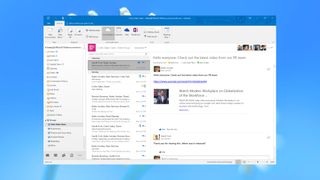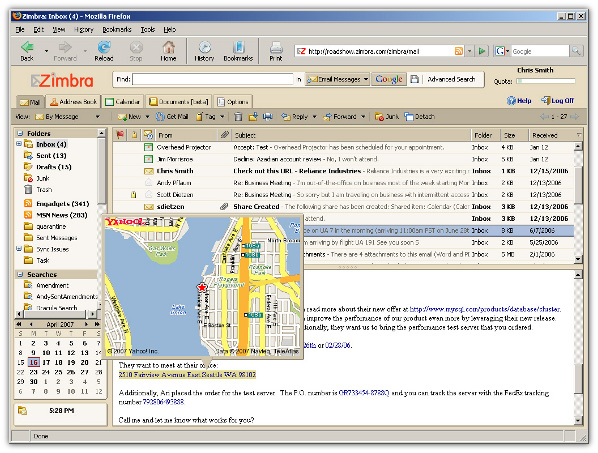Before you begin

- OS X Snow Leopard and later support Exchange Web Services (EWS) as a connection to your Exchange server. If your Exchange server does not use EWS, check with your Exchange administrator to see if an IMAP connection to the server is available instead.
- If you're using macOS High Sierra or later, your Exchange server must use Exchange Server 2010 or later with the latest service pack installed.
- If you're using macOS Sierra or earlier, your Exchange server must use Exchange Server 2007 or later. With Exchange Server 2007, you must also have Service Pack 1 with Update Rollup 4 or later installed.
- For best results, make sure that your software is up to date before setting up an Exchange account in Mail.
Add an Exchange (EWS) account to Mail
Follow these steps to add an Exchange account to Mail. You can add as many Exchange (EWS) accounts as you want.
- Open Mail.
- From the Mail menu, choose Preferences, then click Accounts.
- Click the Add button (+) to add an account.
- Select Exchange from the list of account types, then click Continue.
- Enter your name, email address, and password, then click Continue.
- If Autodiscovery isn't enabled on your Exchange server, you're asked to enter your server address, then click Continue. If you don't know the server address, contact your Exchange administrator.
- Features such as contacts and calendars can also be used with Exchange. Select the options you want to use, then click Continue.
- In earlier versions of macOS, a summary sheet appears when you complete setup. If the summary is correct, click Create. If you need to make changes, click Go Back. Select 'Take account online' to start using the Exchange account.
You have an Exchange account in the UCSD Campus Exchange Organization. Users who have updated to El Capitan will need to run updates for the OS and Microsoft's Outlook (until none are available) prior to setup. Available for Windows, Mac, Linux. Back in 2016, Nylas Mail hit the scene and looked as if it’d be the desktop email client to put all other desktop email clients to shame.
If new messages don't appear in your Exchange mailbox
- If certificate authentication is enabled on the mail server, make sure that your mailbox has no more than 11,000 messages. Microsoft recommends no more than 5000 messages per Exchange mailbox.
- If that isn't the issue, quit Mail, then open it again and don't select any other mailbox while Mail gets new messages. To be sure that Mail has finished downloading and indexing new messages, you can choose Window > Activity, then watch the progress of the download.
If you can't send messages from your Exchange account when SSL enabled

The SSL port setting in Mail preferences may be incorrect for your Exchange account. Check with your Exchange administrator for the correct SSL port setting.
If you can't send or receive email or connect to the Exchange server after upgrading your Mac operating system
OS X Mountain Lion v10.8 and later use the Exchange Autodiscover service, which allows Mail to automatically get setup information from the Exchange server. If your Exchange server isn't providing the needed setup information, contact your Exchange administrator.
If necessary, you can turn off Autodiscover:
- Choose Mail > Preferences and go to the Accounts pane.
- Select your Exchange account from the list of accounts.
- Click the Server Settings tab.
- Deselect the 'Automatically manage connection settings' checkbox.
You can then enter the internal and external server information manually.
Mail automatically uses the correct settings for many email services. That's why you seldom need more than your email address and password to set up an email account on your Mac or your iPhone, iPad, or iPod touch. If Mail needs more information, get the settings in this article from your email provider. You can print the article and complete the Setting column with the information you need.
Best Email Client For Yahoo Mail
| Name of setting | Setting | Description |
|---|---|---|
| Full Name | Choose your sender name as you would like it to appear in messages that you send. Example: John Appleseed. | |
| Email Address | Your email address for this account, such as appleseed@example.com. | |
| Incoming mail server settings | ||
| These settings are for downloading messages (receiving email) from your email provider's mail server. | ||
| Account Type | Choose IMAP*, POP, Exchange IMAP, or Exchange EWS1, as directed by your email provider. If you're using a Microsoft Exchange account, see the Exchange setup instructions for Mac or iPhone, iPad, and iPod touch. | |
| Description | Choose the name that Mail will use for your account, such as Work, School, or Yahoo. | |
| Incoming Mail Server (host name) | The host name of the incoming mail server, such as mail.example.com. | |
| User Name | Your user name for this account, such as appleseed. Some email providers want your full email address as your user name. | |
| Password | The email password you use to sign in to your account. | |
| Port | The port number used by the incoming mail server. Common port numbers for incoming mail are 143 and 993 for IMAP accounts, and 110 and 995 for POP accounts. | |
| Authentication | Choose Password, MD5, NTLM, Kerberos, or None, as directed by your email provider. | |
| Use SSL? | Does the incoming mail server support SSL (Secure Sockets Layer) or TLS (Transport Layer Security) encryption? | |
| Outgoing mail server (SMTP) settings | ||
| These settings are for uploading messages (sending email) to your email provider's mail server. | ||
| Outgoing mail server (SMTP) | The host name of the outgoing SMTP (Simple Mail Transfer Protocol) server, such as smtp.example.com. | |
| Port | The port number used by the outgoing mail server. Common port numbers for outgoing mail are 25, 465, and 587. | |
| Use SSL? | Does the outgoing mail server support SSL or TLS encryption? | |
| Authentication | Choose Password, MD5, NTLM, Kerberos, or None, as directed by your email provider. If None, you may need the additional settings below to send email when you're on a different network, such as from a Wi-Fi hotspot or Internet cafe. | |
| Outgoing mail server (SMTP) settings for when you're on a different network | ||
| Get these off-network settings only if your email provider doesn't use authentication for outgoing mail. | ||
| Outgoing Mail Server (SMTP) | The host name of the outgoing mail server, such as smtp.example.com. | |
| Port | The port number used by the outgoing mail server. | |
| Use SSL? | Does the outgoing mail server support SSL or TLS encryption? | |
| Authentication | Choose Password, MD5, NTLM, Kerberos, or None, as directed by your email provider. | |
Best Email Client For Mac
* IMAP (Internet Message Access Protocol) is best if you check email from multiple devices, because your messages are stored with your email provider until you delete them. As long as your devices can connect to your email service, your mailbox stays the same on each device. If you use POP (Post Office Protocol) on more than one device, those changes don't appear on every device, and new messages delivered to one device may not be delivered to your other devices.